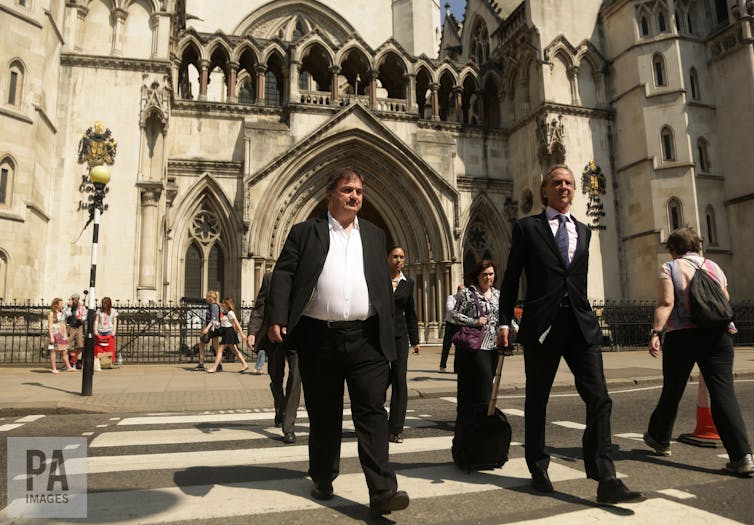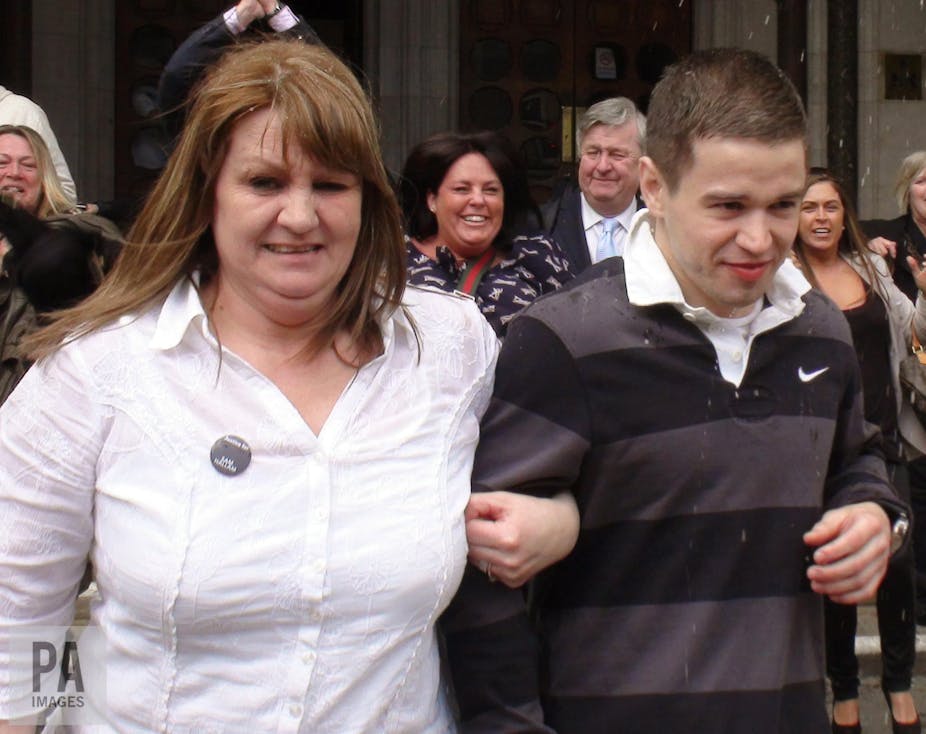In October 2004, a rumour of a gang fight circulated on an east London estate and a large crowd of around 50 young people gathered to take part. During the melee, one youth received a fatal blow from a sharp object and the attackers fled on their bicycles. This tragedy left one young man dead and another, Sam Hallam, convicted of murder – wrongly, as it later turned out.
Eyewitness evidence lay at the heart of this case. One witness picked Hallam out of a police lineup while another identified him in an interview. Yet both these testimonies were later shown to be false and eventually – after seven years in prison – Sam Hallam had his conviction quashed and he was released. For all the importance of eyewitness testimony to the justice system, witnesses can and do get things wrong. Understanding exactly why could help us reduce the chances of further miscarriages of justice.
One obvious reason why witnesses make mistakes is that the conditions of an event may not produce very strong memories. The Hallam case provides a good example of such poor conditions: the incident unfolded rapidly, a weapon was involved, it was distressing and some of the perpetrators had the hoods of their hoodies pulled up to hide their faces. These so-called estimator variables can affect how reliable a witness’s memory is.
Memories can also be influenced by other people, for example if a witness discusses the event with someone else afterwards, particularly other witnesses. For example, Witness 1 in the Hallam case initially told police that they had seen a black man brandishing a baseball bat at the scene of the incident. Despite this, they then picked out the white male they knew as Hallam from an identification parade. In cross-examination, the witness later admitted that they selected Hallam after they had heard a rumour that he was involved.
Similarly, Witness 2 gave a detailed description of the baseball bat in their first interview but made no mention of having seen Hallam at the scene until a second interview. It turned out this was only after the rumour that Hallam was involved circulated.

Leading questions from interviewers can also plant the seeds of a false memory in witnesses’ minds. For example, when Witness 1 picked Hallam out of the police lineup, this was mistakenly treated as evidence that they had identified him as holding the baseball bat. It appears that two leading questions from the interviewing officers contributed to this misunderstanding.
This can happen when investigators have become biased against a particular suspect and focus on a single theory that fits with or confirms the evidence at hand, rather than considering alternative possibilities. On top of this, the expectations and motivation of an interviewer to get information can alter the perception and weight that is given to a witness statement.
Innocent until proven guilty?
Investigator bias may have also played a part in the wrongful conviction of Barry George for the murder of TV presenter Jill Dando. Once again, eyewitness evidence supporting the hypothesis that George was responsible played a primary role in court. The poor quality of the eyewitness evidence presented at trial was overlooked.
For example, a couple of witnesses had learned where the suspect was positioned in the lineup. They were also allowed to give evidence in the form of a partial identification, despite the fact that that they had failed to identify George in a formal video identification procedure. When witnesses talk to each other they may come to agree on what they saw, and research shows feedback from other witnesses can inflate their confidence in court.
These cases remind us that the principle that every suspect should be presumed innocent until proven guilty should apply at all stages of criminal proceedings. The burden of proving a suspect’s guilt is on the prosecuting team, who have a responsibility to ensure a fair trial and that means following procedures to reduce mistaken eyewitness identifications.
Specifically, investigators and lawyers have the responsibility to make sure individual witnesses do not come into contact with each other. But more than this, investigators should consider theories and evidence that may lead them to conclude the suspect is innocent. And where problems with eyewitness evidence do occur, the jury in the trial should be alerted. Without such safeguards, evidence based on eyewitness errors will continue to make its way into trials and more serious miscarriages of justice will occur.

